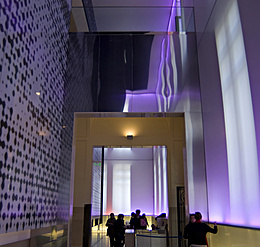
Luminous efficacy: efficiency of the light source in lm/W
Luminous efficacy is defined as the ratio of emitted luminous flux Φ (measured in lumens lm) to expended electrical power of a light source (measured in watts W). Specified in lumens per watt (lm/W), luminous efficacy is thus a measure for evaluating the efficiency of lamps such as LEDs, or also the luminaire itself including control gear and optic.







